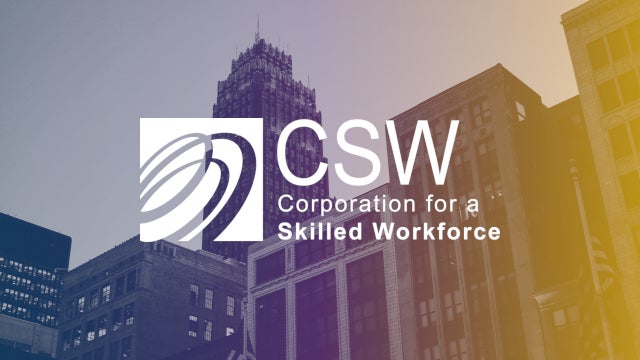In today’s digitized economy, education is increasingly important and serves as the foundation for workers’ careers and future training opportunities. As work becomes less stable and secure, access to education and training is especially critical. In fact, nearly all jobs created since the Great Recession were filled by workers with at least some post-secondary education.
Yet student loans, the main vehicle used to finance higher education, have left many students with crippling debt. In the last 30 years, the share of young households (adults between 20-40 years old) with student debt has climbed from 14 to 38 percent, and the average 2016 college graduate left school with over $35,000 in student debt. The overall amount of student loan debt now tops $1.4 trillion, the largest amount of consumer debt other than mortgage debt.
To reduce debt and increase educational access, some institutions, such as Purdue University, have begun testing Income Share Agreements (ISAs). ISAs are not a new idea. Nobel-Prize-winning economist Milton Friedman proposed the idea over 50 years ago, and many countries in Latin America use these types of programs today. The concept of an Income Share Agreement is straightforward. An investor – usually a university or a private firm – pays for a portion of a person’s education or training. Once this person graduates and begins to earn income, she pays a predetermined percentage of her income back to her sponsor over a specified time period.
One potential benefit of ISAs is that they involve less financial risk for the student. A traditional student loan generally requires that the borrower pay back a fixed dollar amount per month. If a student is unemployed, experiences high income volatility, or enters a low-income career, she may have difficulty paying back the loan. In contrast, ISA payments represent a fixed percentage of the student’s income, meaning that the dollar value of the payment will adjust up or down depending on the student’s ability to pay. Students that are unemployed or earning below a certain threshold will generally not have to make any payments, ensuring that graduates will not struggle to make monthly loan payments they can’t afford. In this sense, ISAs are similar to income-based repayment student loan models.
Additionally, ISAs can encourage schools and other investors to place additional emphasis on student success. This is important because existing policies tend to focus on increasing access to higher education, but sometimes struggle to prioritize college completion and workplace success to the same extent. If higher education institutions were to have a more clearly delineated financial stake in the careers of their graduates, they would have an additional incentive to ensure their students were receiving high-quality career counseling and graduating with marketable, in-demand skills.
The most well-known ISA is the “Back a Boiler” program from Purdue University, spearheaded by Purdue President and Future of Work Initiative Honorary Co-Chair Mitch Daniels. The University started this program in 2016, allocating $2 million to 160 juniors and 79 seniors. The students will pay a portion of their income for roughly 100 months, depending on the major, or until they pay back 250 percent of Purdue’s investment. Unlike loans, Purdue’s ISA comes with a built-in guarantee – if students make under $20,000 after graduation or remain unemployed, they do not have to pay back the ISA.
Purdue offers different payback rates and terms depending on the major and year in school. For example, Purdue’s ISA calculator shows that junior year computer science majors receiving $15,000 would pay 4.22 percent of their income for 88 months after they graduate; economics majors would pay 5.55 percent of their income for 100 months; biology majors would pay 6.47 percent of their income for 112 months; and English majors would pay 7.45 percent of their income for 116 months. Rates are calculated based on expected future income for common career paths for these majors.
Purdue’s ISA program provides students with significant flexibility: they are not required to pursue a job in any specific industry, and can even choose to not get a job at all. If the student leaves the workforce voluntarily for any reason (such as to go to graduate school or take maternity leave), the payments can be deferred for up to five years. And the program is much more accessible to students because it doesn’t require a parent to co-sign, a requirement that can be difficult for students with parents who have poor credit history.
ISAs are useful beyond traditional colleges and universities. As the economy changes and more jobs are automated, programs to retrain and upskill workers, such as “coding boot camps,” are emerging. These programs can be expensive, making them inaccessible to lower-income workers. ISAs can reduce this financial barrier. For example, C4Q — whose stated goals are to increase gender diversity, socioeconomic diversity, and racial diversity in the coding field — uses what they call a “pay it forward commitment.” While the cost of the coding courses is initially free to the participating students, the students agree to pay 12 percent of their salaries for up to two years after they complete the program provided that they are in a job above a certain income threshold.
The programs at Purdue University and C4Q are providing students with an innovative alternative to traditional student loans. There are, however, a few potential downsides and challenges.
Critics point out that ISAs could take advantage of students, especially given that ISAs are a relatively new concept and thus students may not fully understand the details well enough to make an informed decision. Other critics have broader concerns that by allowing workers to promise a portion of their future earnings to investors, ISAs could exploit and reinforce existing power imbalances in the labor market.
ISA programs are also difficult to establish because they require a large amount of upfront capital with significant investment risk. For example, if students end up making even slightly less money than predicted, the investing entity could lose money. Oregon was unable to overcome this obstacle when it tried to implement a government-run ISA program (where the government pays for college but the student elects to pay a tax surcharge for a period of time). It is possible that re-insurance could play a greater role to address this problem as ISAs become more common.
An additional risk for investors is that even if their projections of student earnings are accurate, they could still lose money if students under-report their earned income in order to reduce their payments. Purdue has addressed this challenge by requiring students to authorize the IRS to send their tax returns to a third party, Vemo, a private company that services the Purdue program. Vemo then uses the tax return to verify income and ensure payments are correct.
With few regulations explicitly designed to govern the operation of ISAs, there are also many unanswered questions related to the tax and bankruptcy treatment of these arrangements, whether usury laws apply, how investors can verify ISA recipients’ incomes, and how to protect people from predatory agreements. This year, Sens. Marco Rubio (R-FL), Tom Cotton (R-AK), and Todd Young (R-IN) introduced a bill laying out a regulatory framework for ISAs, including capping the percentage of income an investor can take back from a student and defining the tax implications of ISAs. A similar bill was recently introduced by Reps. Messer (R-IN) and Polis (D-CO) in the House.
ISAs are an important development in the world of education finance that deserves more attention and analysis. As ISAs grow in popularity, policymakers should explore the opportunities and risks that these contracts represent, and debate a regulatory framework that ensures students are protected. Making education and training more affordable is a pressing challenge for today’s society and its lawmakers, and ISAs could be part of the solution.
Ethan Pollack is the Associate Director for Research and Policy at the Future of Work Initiative. Shayna Solomon is an undergraduate at Tufts University and was a summer intern at the Future of Work Initiative.


